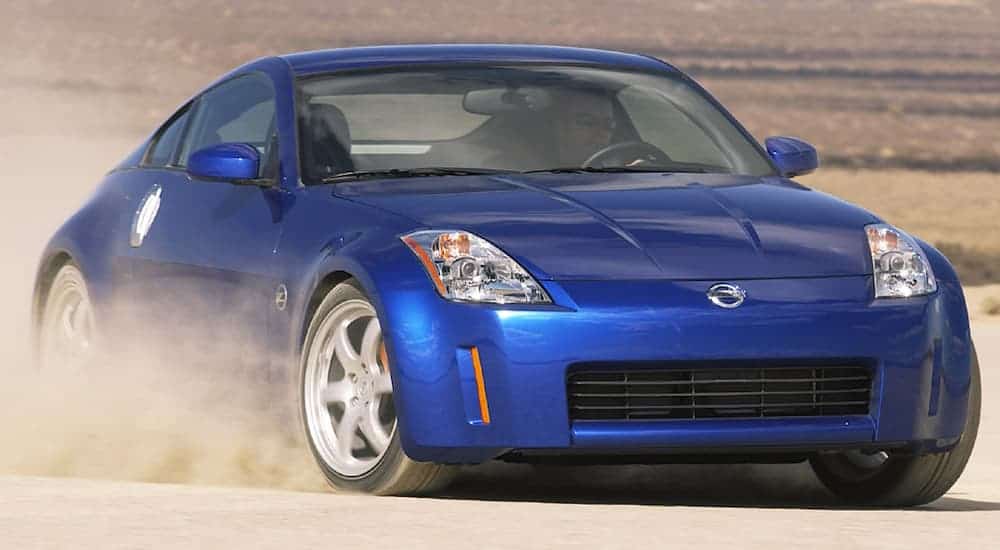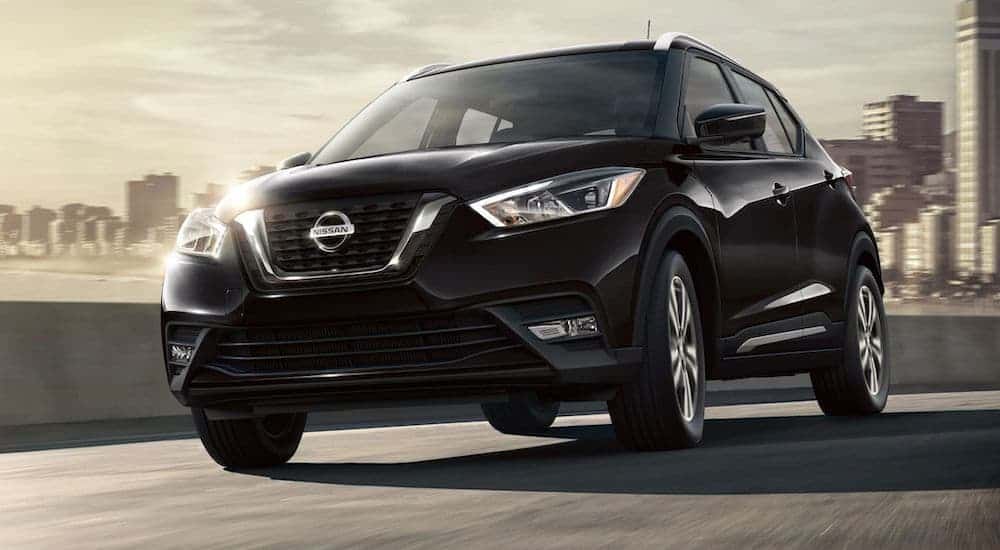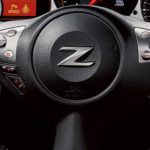One trip to your local Nissan Dealer, and it becomes clear that Nissan is a force to be reckoned with in the automotive space with over a dozen separate lineups on offer. There’s plenty of choices to be had for any aspiring driver. Today, Nissan produces vehicles ranging from sedans, hybrids, SUVs, trucks, and more, all of which have that distinctive Nissan quality.
Nissan has become a household name on an international scale, which is no small feat for any manufacturer. Each year, Nissan pushes forth new iterations of its beloved lineups with annual refreshes, and these are often met with widespread acclaim. As a manufacturer known for producing high-quality automobiles such as the Versa, Altima, and the Frontier, it’s been a wild ride for Nissan. But how exactly did Nissan get from its initial foundation to where it stands in the current year? To answer this question, we must take into consideration the age-old theory that taking a look back is the only way to move forward.
The Trailblazer Era
The foundation of Nissan occurred in Tokyo, Japan, in the year 1928, when Mr.Yoshisuke Aikawa, a well-known entrepreneur from Yamaguchi, Japan, formed the company. It wasn’t until 1933 that the company would enter the Tokyo Stock Exchange with a focus primarily on auto parts. This period in Japan saw a massive increase in the presence of automotive manufacturers starting as far back as the 1910s. What this ultimately meant for Nissan was that it had to stake its claim as a prominent auto parts manufacturer.
In the following years, Nissan would continue to produce vehicles both for ground travel and aviation. Fast forward to 1937, Nissan released the Datsun Type 15, a revolutionary vehicle that earned its place as the first mass-produced vehicle in Japan. Before this, Mr. Aikawa had visited the United States back in 1908 and was instantly enamored at the craftsmanship behind American automobiles. This ended up having a substantial influence on Mr. Aikawa, and upon his return to Japan, he utilized his knowledge to further Nissan’s innovative qualities. Things came full circle when Nissan made its first appearance in the United States with the introduction of the Datsun 1000 sedan in 1958.
At the time, Nissan had been producing Datsuns for over twenty years, and the lineup was ready to reach the West. Due to the lack of an American production plant, drivers at the time had to import their vehicles. The Datsun 1000 was quite impressive at the time with its top speed of 95km/h or 59 mph. Nissan ended up selling 146 Datsun 1000 sedans before promptly replacing it with the Datsun 1200. This new and improved Datsun would go on to sell 1,318 units.
In 1958 a compact pickup variant of the Datsun became available to the American market, again through importing. This pickup included a 37 hp engine that was later upgraded to a 48 hp engine in 1959.

A Stronger Presence Out West
Nissan formed its first production plant in North America in 1966, and this was followed by expansions into even more markets. Nissan would continue to import vehicles to America, such as the Datsun 411 and the Nissan Patrol, the latter of which being its first attempt at an SUV in the states. By 1968, Nissan went on to release its first vehicle styled specifically for the U.S. market.
The Datsun 510 found moderate success amongst American drivers at the time and came in three different variants, a 2-door coupe, a 4-door sedan, and lastly a 5-door wagon. As production began to ramp up, Nissan vehicles started appearing even more on North American roads. By 1971, Nissan was selling over 250,000 vehicles in the U.S market a year. Shortly after this, Nissan sold its one-millionth vehicle in the U.S. market in 1973 before becoming the top importer in 1975. During these events, the Datson 510 had a monumental impact on Nissan vehicles and sports sedans in general.
Nissan would continue to produce high-quality automobiles throughout the 1970s, and once the 1980s began, slowing down was not on the agenda. During this time, Nissan had released its first truck in the U.S., and in 1980, Nissan North America was founded. Nissan was now producing vehicles in multiple countries for vastly different markets.
Nissan reached a new milestone in 1989 when producing its one-millionth vehicle within its American production plants and had become a worthy competitor in the market. In the 1990s, Nissan focused heavily on cleaner driving with its efforts earning them an environmental award issued by the EPA in 1991. The first Altima was manufactured in America in 1992, and the next year Nissan would celebrate a decade in the States. Throughout the 90s, Nissan was producing SUVs, sedans, and trucks for more fans than ever before, and this success would ultimately lead them into the new millennium.
The Innovation Behind A New Millennium
Upon entering the new millennium, Nissan was in a fantastic spot, with approximately double the number of vehicles produced compared to a decade prior. In addition to this, sales were through the roof, and Nissan’s sales were doubled at this time. Nissan had an impressive lineup during this period with the introduction of consumer-grade hybrid vehicles and brand-new supercars. The Nissan 350Z made an appearance in 2002 powered by an impressive 3.5L V6, which produced 287 hp. The 350Z saw substantial performance gains on an annual basis until the 370Z took its place in the market in 2009.
During this period, Nissan also began production of the Titan, a full-size truck with plenty of potential. The Titan was a success, and you’ll still find the Titan on offer today. Today’s Titan comes standard with an incredible 5.6L V8 that produces 400 hp and 413 lb-ft of torque that is beloved by many. In 2007, Nissan introduced its first hybrid ever produced for consumers with the Altima Hybrid and Nissan continues to build upon that vehicle’s success to this day.
The Last 10 Years
Nissan entered the 2010s with an innovative mindset. In the year 2010, Nissan would bring a vehicle to the market running solely on electricity, thus emitting zero emissions. The Nissan Leaf was the first widely-available zero-emission vehicle accessible to the masses, and that helped it to become the best selling electric vehicle to date. The Leaf has seen significant improvements since its first iteration, including a more powerful 60-kWh battery compared to the 24-kWh battery that was first used. Between these two batteries, a 30-kWh battery made an appearance in 2016 followed by a 40-kWh battery in 2018. The 40-kWh battery could allow the Leaf to travel 151 miles on a single charge, which was a large improvement over the 107 mile-range of the 30-kWh battery.With the aforementioned 60-kWh battery, however, the Leaf can now achieve 226 miles on a single charge. This is approximately a 49% increase over the 40-kWh battery and an impressive 111% more than the 30-kWh battery.
The latest vehicle to be introduced into the North American market by Nissan is the Kicks. Drivers of the Kicks are treated to a robust feature set that ultimately makes up the crossover SUV. Thanks to the integration of modern tech-centric features regarding connectivity, the Kicks is ready for the future. Boasting a best-in-class fuel efficiency, coupled with a host of safety features, there are many reasons to get yourself a Nissan Kicks. Additionally, the Nissan Kicks is a stylish ride with a classy interior and exterior further enhanced by a plethora of personalization options. The Kicks was worthy of its place as a Nissan SUV and is now one of six SUV models that Nissan produces.
The Future of Nissan
What Nissan’s history proves is that it has been a manufacturer driven by quality ever since its inception. The vehicles offered today by the acclaimed manufacturer are an indication of just how far Nissan has come in nearly a century. The industry is a completely different entity compared to how it used to be, but Nissan has continuously been striving for excellence.
As time moves on, it’ll be manufacturers such as Nissan who raise the bar and forever gain the trust of every one of its drivers. This is made possible with the precedent set by Nissan regarding the high-quality automobiles it has been producing for decades. The best way to get your foot into the door within the world of Nissan is to visit your local dealership and inquire about how a Nissan vehicle can change your life. Once you experience driving a Nissan vehicle, you’ll have a first-row seat to watch a manufacturer change the future.





